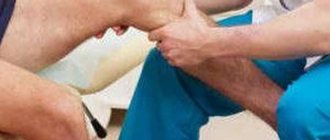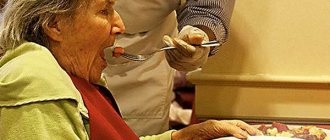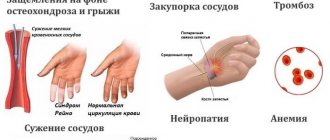Charcot-Marie-Tooth disease
(CMT) is a genetic nerve disorder that causes muscle weakness, especially in the arms and legs. The name of the disease comes from the doctors who first described it: Jean Charcot, Pierre Marie, and Howard Henry Tooth.
The disease affects the peripheral nerves, outside the central nervous system, that control muscles and allow a person to feel touch. Symptoms get worse gradually, but most people with the disease have a normal life expectancy.
(c) Wikipedia
Symptoms of CMT in adults
- Weakness in the muscles of the legs and ankles;
- Curvature of toes;
- Difficulty lifting the foot due to weak ankle muscles;
- Numbness in the arms and legs;
- Change in the shape of the lower leg, with the leg becoming very thin below the knee, while the thighs retain normal muscle volume and shape (stork leg);
- Over time, the arms become weaker and patients find it difficult to perform daily tasks;
- Pain in the muscles and joints appears, and it is difficult for a person to walk. Neuropathic pain occurs due to damaged nerves;
- In severe cases, the patient may need a wheelchair, while others may use special shoes or other orthopedic devices.
How to survive for a person diagnosed with Charcot-Marie amyotrophy
neurologist Kalupina I.G.
Amyotrophy neural Charcot-Marie has a slow progression. The disease is based on atrophy of muscle fibers in the distal parts of the legs. It belongs to the category of diseases with a genetic predisposition.
Symptoms of the disease
In a greater percentage of cases, Charcot Marie disease affects men. The manifestation of the disease usually occurs between the ages of 15 and 30 years. Very rarely the disease develops in the preschool period. The onset of the disease is characterized by such manifestations as muscle weakness and fatigue in the legs. Patients cannot stand in one place and, to reduce muscle tension, begin to stomp on one point. There are cases when the onset of the disease is accompanied by acute muscle pain, various unpleasant sensations, and a crawling feeling in the legs. Other symptoms: the shape of the toes is bent, similar to a hammer; decreased sensitivity in the legs and feet; muscle cramps in the lower extremities and forearm; a person cannot move his legs horizontally; manifestations such as sprained ankles and fractures in the feet are common; loss of sensitivity: inability to distinguish between vibration, cold and hot touch; writing disorder; impairment of fine motor skills: the patient cannot fasten a button. Primary degeneration affects the muscles of the legs and feet in a symmetrical manner. The muscles in the tibia also atrophy. During such processes, the shape of the leg sharply narrows in the distal sections. The legs become like the shape of an inverted bottle. They are also called “stork legs”. Deformation of the feet occurs. Paresis in the feet significantly changes the nature of gait. The patient cannot step on his heels and raises his legs high when walking. This gait is called steppage, which is translated from English as “work horse.” A few years after the onset of foot degeneration, the disease is detected in the distal parts of the arms, as well as in the small muscles of the hands. The patient's hands become like the crooked hands of a monkey. The patient's intelligence, as a rule, does not suffer. The proximal parts of the limbs are not subject to degenerative changes. The atrophic process does not extend to the muscles of the trunk, cervical spine and head. Total atrophy of the lower leg muscles leads to dangling foot syndrome. Interestingly, despite severe muscle degeneration, patients can retain the ability to work for some time.
Diagnosis of the disease
The diagnosis is based on a study of the genetics of the patient and the characteristics of the manifestation of the disease. Nerve and muscle reflexes must be checked. For these purposes, EMG is used to record nerve conduction parameters. A DNA test and a general blood test are prescribed. If necessary, a nerve fiber biopsy is performed.
Treatment approach
Treatment is carried out in accordance with the existing symptoms of neural amyotrophy of Charcot Marie Tooth. The activities are comprehensive and lifelong. It should be noted that more effective treatment methods are not known to medicine. Only methods are used that help alleviate the patient’s condition and improve their quality of life. It is important to optimize the patient's functional coordination and mobility. Treatment measures should be aimed at protecting weakened muscles from injury and decreased sensitivity. The patient's relatives should help him in every possible way in the fight against this disease. After all, treatment is carried out not only in medical institutions, but also at home. All prescribed procedures must be followed strictly and carried out daily. Otherwise, there will be no results from the treatment. Treatment of amyotrophy includes a number of techniques: physiotherapeutic procedures; occupational therapy; a set of physical exercises; special support devices for the feet; orthopedic instep supports to correct deformed feet; feet care; regular consultation with your doctor; the use of orthopedic surgery; injections of B vitamins; prescription of vitamins E, A, C. Additionally used: For amyotrophic lesions, a specific diet is prepared. It is recommended to eat foods with high protein content; patients adhere to a potassium diet and should consume more vitamins. If the course of the disease is regressive, in parallel with the above remedies, mud, radon, pine, sulfide and hydrogen sulfide baths are prescribed. An electrophoresis procedure is used to stimulate the peripheral nerves. If there is impaired mobility in the joints and skeletal deformation, correction by an orthopedist is indicated. To alleviate the emotional state of the patient, psychotherapeutic conversations are required. The basis of treatment is the use of agents that help improve trophic indicators and the transmission of impulses along nerve fibers.
Complications of the disease
With a progressive course, amyotrophy Shcharko-Marie Tuta can lead the patient to complete disability. The result may be a complete loss of the ability to walk. Manifestations such as severe loss of touch as well as deafness may occur.
Disease prevention
Prevention involves seeking advice from a geneticist. Vaccines against polio and tick-borne encephalitis should be administered in a timely manner. Prevention of the development of early foot deformities is to wear comfortable orthopedic shoes. Patients should visit a specialist in foot diseases - a podiatrist, who can promptly prevent changes in soft tissue trophism and, if necessary, prescribe appropriate drug therapy. Difficulties in walking can be corrected by wearing special braces. They can control the dorsiflexion of the leg and lower leg, eliminate ankle instability and improve body balance. Such a device allows the patient to move without the help of others and prevents unwanted falls and injuries. Foot braces are used for foot drop syndrome.
Risk factors and causes of CMT
CMT is a hereditary disease, so people who have close relatives with the disease have a higher risk of developing the disease.
The disease affects peripheral nerves. Peripheral nerves are made up of two main parts: the axon, which is the inner part of the nerve, and the myelin sheath, which is the protective layer around the axon. CMT can affect the axon and myelin sheath.
At CMT 1
genes that cause the breakdown of the myelin sheath are mutated. Eventually, the axon is damaged and the patient's muscles no longer receive clear messages from the brain. This leads to muscle weakness and loss of sensation or numbness.
For CMT 2
the mutating gene directly affects axons. The signals are not transmitted strongly enough to activate the muscles and senses, so patients have weak muscles, poor sensation, or numbness.
ShMT 3
or
Dejerine-Sottas disease
, a rare type of disease. Damage to the myelin sheath leads to severe muscle weakness and soreness. Symptoms may be noticeable in children.
ShMT 4
is a rare disease that affects the myelin sheath. Symptoms usually begin in childhood and patients often require a wheelchair.
ShMT X
caused by a mutation on the X chromosome. It is more common in men. A woman with CMT X will have very mild symptoms.
What causes lead to the development of Charcot's disease?
The main and only cause of any type of Charcot-Marie-Tooth disease is point mutations in genes.
At the moment, science knows about two dozen genes that undergo changes that subsequently lead to amyotrophy. Most often, “breakdowns” are found in genes located on chromosomes 1 and 8, namely PMP22, MPZ, MFN2, etc. And this is only a part of them. Many remain behind the scenes, so to speak, because about 10-15% of patients do not even know about their illness and do not seek medical help.
The demyelinating type of pathology is also associated with acquired autoimmune aggression, in which the cells that create the outer sheath of the nerve are perceived by the body as foreign and are destroyed.
There are also risk factors that contribute to a more pronounced manifestation of the symptoms of Charcot-Marie-Tooth disease and aggravation of the existing clinical picture.
Triggers of the disease include:
- alcohol consumption;
- use of potentially neurotoxic drugs. For example, vincristine, lithium salts, metronidazole, nitrofurans, etc.
Anesthesia using thiopental is contraindicated for patients suffering from hereditary peroneal amyotrophy.
How to diagnose CMT?
The doctor will ask about your family history and look for signs of muscle weakness - decreased muscle tone, flat feet, or high arches (cavus).
Nerve conduction studies measure the strength and speed of electrical signals that travel through nerves (electromyography). Electrodes are placed on the skin and deliver mild electric shocks that stimulate the nerves. A delayed or weak response suggests a neurological disorder, and possibly CMT.
With electromyography (EMG), a thin needle is inserted into the muscle. When the patient relaxes or contracts the muscles, electrical activity is measured. Testing different muscles will show which one is suffering.
Genetic testing is done using a blood sample that can show whether a patient has gene mutations.
Diagnostics
Confirmation of the diagnosis of Charcot-Marie-Tooth syndrome is associated primarily with the analysis of neurological symptoms. Muscle strength, tendon reflexes, sensory integrity, and tremor are checked. At the appointment, deformities of the foot, leg, hand, and spine are checked. The neurologist must clarify the history of the onset of symptoms and the presence of signs of the disease in the family.
Instrumental research methods are prescribed: electroneurography and electromyography. In the first case, the speed at which the pulses travel is measured. In the second, the bioelectrical activity of muscle tissue is assessed, and the degree of disruption of the peripheral system is specified.
Treatment of Charcot-Marie-Tooth disease
(c) The New York Times / Michael Nagle
There is no cure for CMT yet, but it is possible to relieve symptoms and delay the onset of disability.
NSAIDs (nonsteroidal anti-inflammatory drugs), such as ibuprofen, reduce joint and muscle pain and pain caused by damaged nerves.
Tricyclic antidepressants (TCAs) are prescribed if NSAIDs are not effective. TCAs are commonly used to treat depression, but they can reduce the painful symptoms of neuropathy. However, they do have side effects.
Physical therapy can help strengthen and stretch your muscles. Exercise will help maintain muscle strength.
Occupational therapy can help patients who have problems with finger movement and find it difficult to carry out daily activities.
Orthopedic devices can prevent injury. High-top shoes or special boots provide additional ankle support, and special shoes or shoe insoles can improve gait.
Surgery to remove the Achilles tendon can sometimes relieve pain and make walking easier. Surgery can correct flat feet and relieve joint pain.
Prognosis and complications
Neural amyotrophy of Charcot-Marie-Tooth is characterized by a slowly progressive course. In case of severe damage, patients will lose the ability to move without supporting devices or wheelchairs. Hand dysfunction is accompanied by loss of ability to care for oneself.
Frequent complications include dislocations, fractures, and sprains. The disease does not shorten life expectancy.
The development of Charcot-Marie-Tooth amyotrophy is determined by hereditary factors that are not yet fully understood today. Because of this, there is no possibility of choosing a treatment that would stop its course and development. However, the use of symptomatic treatment, physical therapy, and orthopedic devices can reduce symptoms.
Possible complications of CMT
Breathing may be difficult if the disease affects the nerves that control the diaphragm. The patient may need bronchodilator medications or mechanical ventilation. Being overweight or obese can make breathing difficult.
Depression can be a result of the mental stress, anxiety and frustration of living with any progressive illness. Cognitive behavioral therapy helps patients cope better with everyday life and, if necessary, with depression.
Although CMT cannot be cured, taking some steps can help prevent further problems. These include taking good care of your feet, as there is an increased risk of injury and infection, and avoiding coffee, alcohol and smoking.
Did you like the news? Follow us on Facebook
Treatment
Treatment methods for Charcot-Marie-Tooth pathology are associated with relief and reduction in symptoms. These include the use of medications, physical therapy and surgery.
Medications
Drug therapy includes drugs aimed at improving metabolism (sodium adenosine triphosphate), microcirculation (Pentoxifylline), and neuromuscular transmission (Galantamine).
Vitamin E and medications containing calcium are prescribed.
Physiotherapy
For Charcot-Marie-Tooth amyotrophy, the use of physiotherapeutic treatment methods is indicated. Massage, balneotherapy, electrical stimulation, mud therapy, therapeutic baths, and hydromassage are used.
For symptoms associated with impaired sensitivity, electrophoresis and galvanization are used with caution. If the sensory nerves are not affected, electrophoresis is performed with calcium and anticholinesterase preparations.
The main goals of physiotherapeutic treatment of Charcot-Marie-Tooth disease:
- activation of metabolism;
- reduction of dystrophy;
- improving blood circulation;
- activation of the conductivity of the neuromuscular system;
- normalization of psycho-emotional state.
Surgery
The main purpose of surgery for Charcot-Marie Tooth pathology is to prevent foot deformity. However, before carrying out the operation, a careful assessment of possible negative consequences is made. Anesthesia has a negative impact on the course of the disease. After surgery, limited rehabilitation measures are indicated.
What is needed to confirm the diagnosis
It must be remembered that, first of all, the doctor will be able to suspect Charcot-Marie-Tooth disease if there is a burdened family history, that is, the presence of similar symptoms in one of the patient’s closest relatives.
Of the instrumental examination methods, the most informative is electroneuromyography (ENMG). In this case, a decrease in the speed of impulse transmission along the nerves is detected from normal 38 m/s to 20 m/s in the arms and 16 m/s in the legs. Sensory evoked potentials, which are not evoked at all or have a significantly reduced amplitude, are also examined.
In the second type of Charcot syndrome, changes in ENMG do not occur. Pathology is observed only when examining evoked sensory potentials.
A nerve biopsy with histological analysis of the obtained materials allows definitive confirmation of the presence of neural amyotrophy.
In this case, the first variant of the disease is characterized by:
- demyelination and remyelination of fibers with the formation of “onion heads”;
- decrease in the proportion of large myelinated fibers;
- axonal atrophy with a decrease in their diameter.
And the second type of Charcot Marie Tooth disease is not accompanied by demyelination and the formation of “bulb heads”, otherwise the signs are the same.










